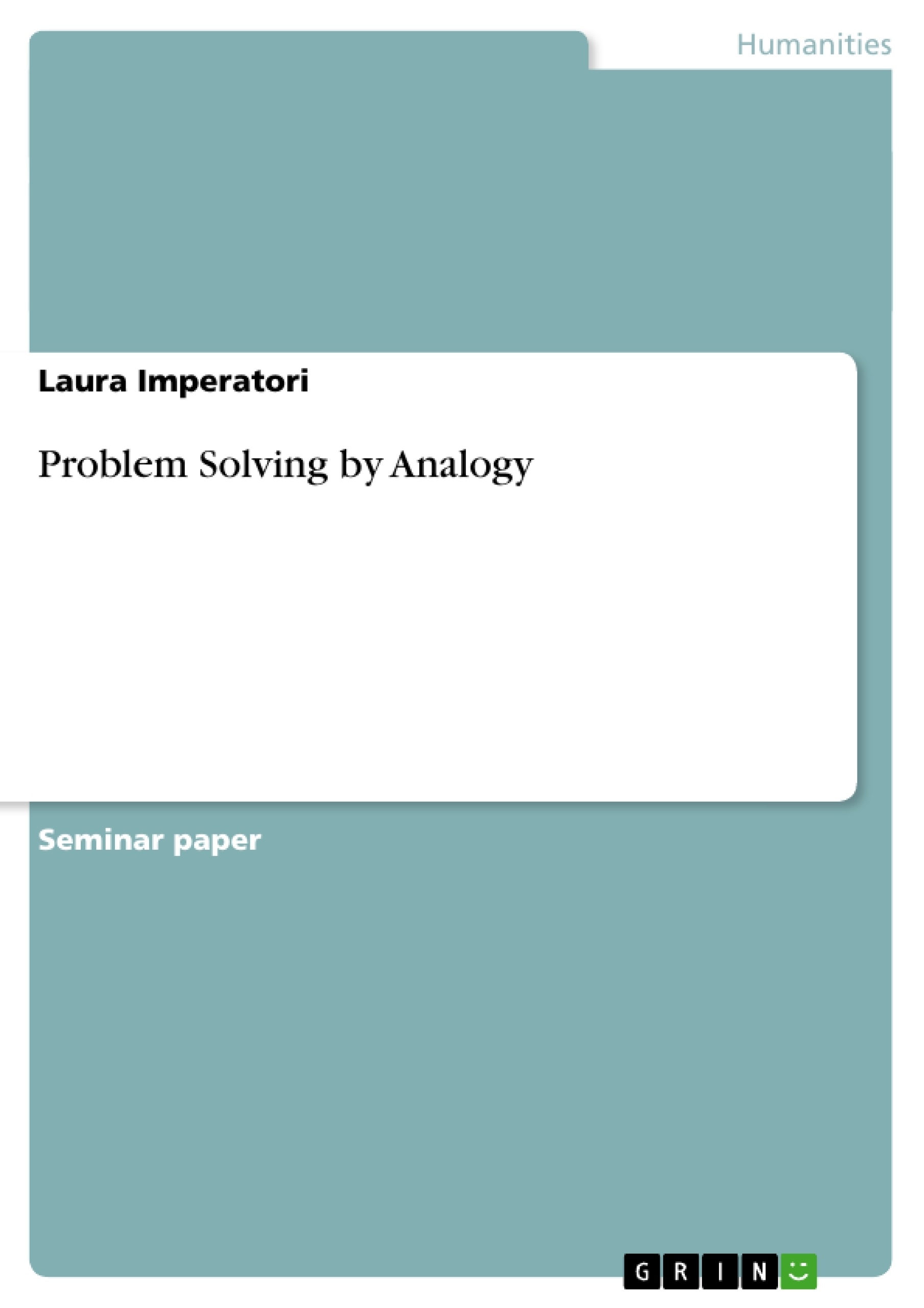We investigate problem solving by analogy in order to see whether solving a similar, easier problem beforehand aids in deciphering a more complicated one, given that the two problems have a similar (homomorphic) problem state. The two problems that have been used in this experiment are the historic Missionary & Cannibals problem (M&C) as well as its visual representation - referred to as "Counter-Moving" (CM) in the following.
The use of analogy in problem solving requires restructuring the problem in order to create an insight - as can be measured by "warmth" ratings - in contrast to problem solving based on trial-and-error learning (mostly common in elementary algebra) as proposed by behaviourists such as Thorndike. The restructuring of the problem relies on mapping from a source domain to a target domain. Since there is an infinite number of possible source domains, many humans have difficulies at spontaneous use of analogy and need its relevance to be highlighted. We have shown that the success rate on the counter-moving problem does differ significantly from the success rate on the M&C problem, which implies that the CM problem is conceptually easier to understand. Hence, we could show that solving a similar, easier problem with a homomorphic problem state does indeed increase the success rate of solving a more complicated one later by comparing the success rates between Groups A and B that solved the problems in opposite orders.
Table of Contents
- Introduction
- Methods
- Subjects
- Materials
- Procedure
- Results
- Discussion
- Conclusion
- References
Objectives and Key Themes
This research aims to investigate the effectiveness of problem-solving by analogy. It seeks to determine whether solving a simpler, analogous problem before a more complex one can enhance problem-solving success, particularly when the two problems share a similar (homomorphic) problem state.
- Problem-solving by analogy
- Homomorphic problem states
- Insight problem-solving
- Functional fixedness
- The role of prior knowledge and experience
Chapter Summaries
The introduction discusses the concept of insight problem-solving, contrasting it with trial-and-error learning methods. It highlights the significance of restructuring problem representations to overcome impasses, using examples like Maier's pendulum problem and Duncker's candle problem. The paper then introduces the Missionary & Cannibals problem (M&C) and its visual representation, "Counter-Moving" (CM), and discusses the potential role of analogy in overcoming obstacles.
The methods section describes the experimental design, including the recruitment of participants, the materials used, and the procedure. The results section presents the findings of the study, indicating that solving the CM problem prior to the M&C problem significantly increased success rates, suggesting that solving a similar, easier problem aids in solving a more complex one.
The discussion section analyzes the implications of the findings and explores potential areas for further research, such as the impact of prior knowledge on problem-solving strategies. The conclusion summarizes the key findings and reiterates the importance of analogy in problem-solving, particularly in cases where problems share a homomorphic structure.
Keywords
The primary keywords and focus topics of this research include problem-solving by analogy, insight problem-solving, homomorphic problem states, functional fixedness, prior knowledge, and the Missionary & Cannibals problem. The study examines the effectiveness of using analogy as a problem-solving strategy, particularly in the context of problems with similar underlying structures.
- Quote paper
- Laura Imperatori (Author), 2014, Problem Solving by Analogy, Munich, GRIN Verlag, https://www.grin.com/document/276480




